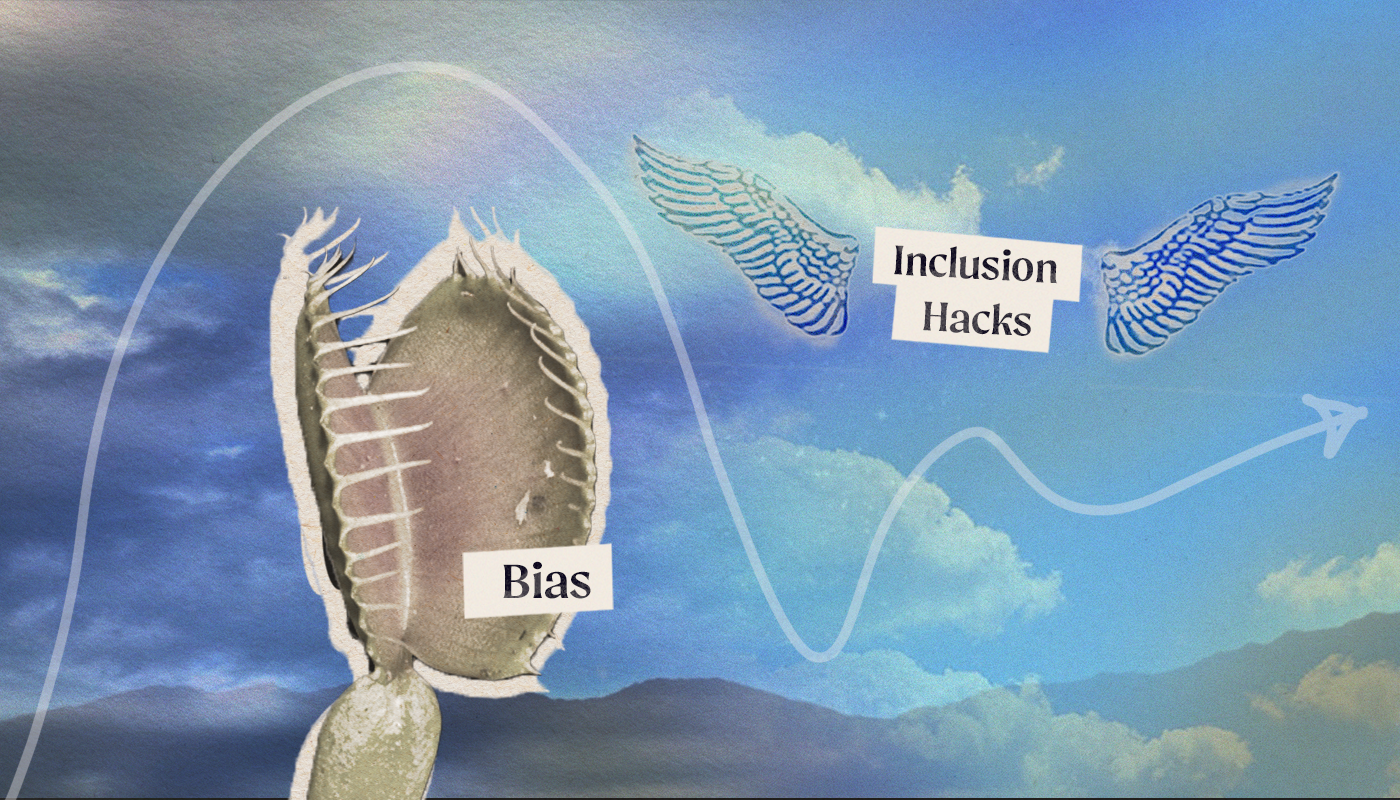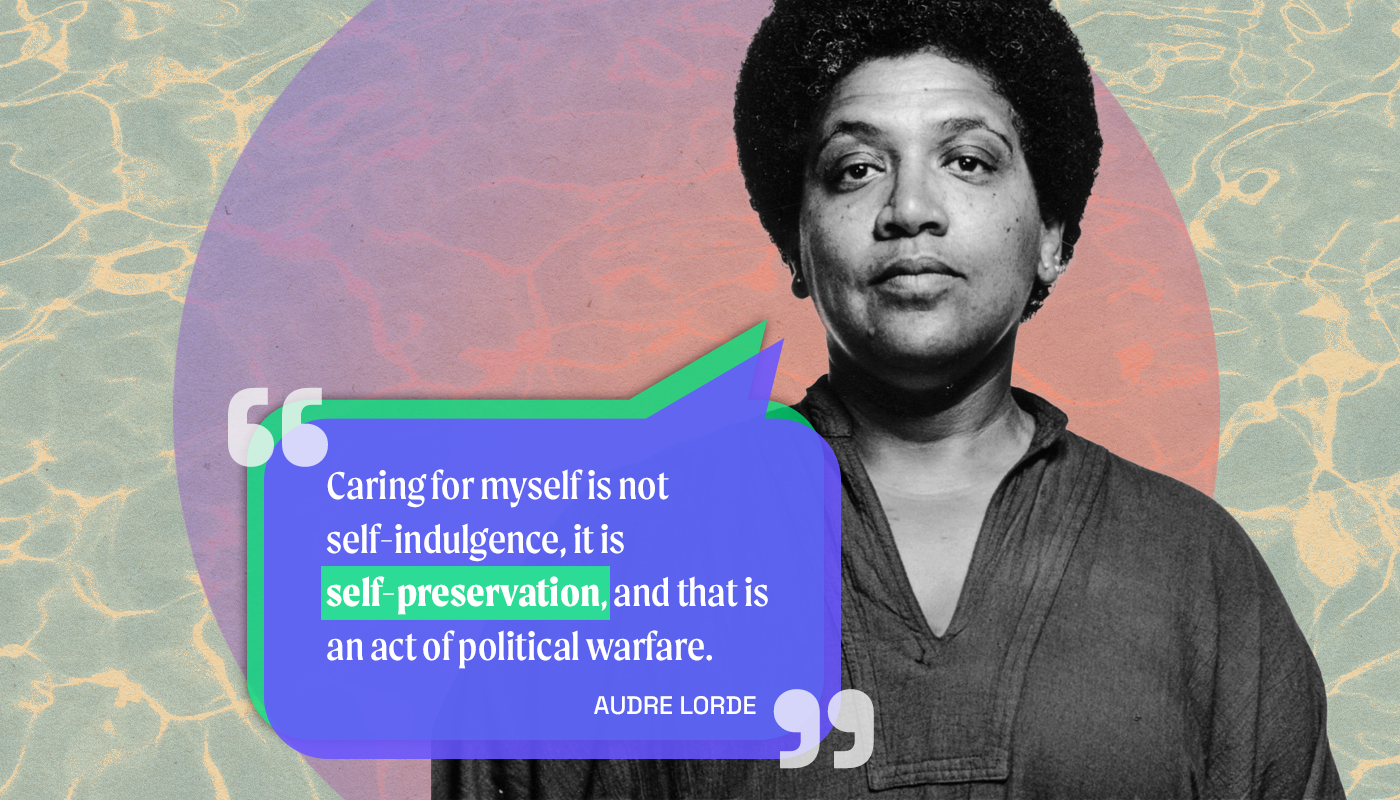The science behind inclusion hacks
Combat bias to create sustained behavioral change.

Inclusion hacks help us navigate the traps of our bias and decode the systems around us for sustained behavior change.
When thinking about how to overcome systemic and personal bias, it’s easy to feel stuck — stuck in your current way of thinking and seeing the world. There are important details that are likely invisible to you and other information that is so obvious you might not even notice it. When you put all these factors together, changing personal behaviors can feel like a monumental task — let alone changing entire systems.
Yet, here at Includr.org, we are aiming for both. We’re here to offer guidance from experts in the field on how to actually accomplish sustained changes for more inclusive spaces where everyone feels safe, respected, and has the opportunity to thrive.
So what is an inclusion hack?
Disrupting bias and bypassing systemic barriers requires an informed and actionable bank of tools. Enter inclusion hacks: tips and tricks to change your everyday behavior.
Inclusion Hacks
As Susie Wise describes, “Hacks are small, scrappy, safe-to-fail experiments that help you see and decode the system you are a part of in order to start to create change.”
Our hacks are actionable, inspired by research, and tailored toward a variety of audiences along the power lines. We aim to break down inclusive practices to make them approachable and tangible to create eventual habits that people can adopt in their everyday lives.
How do inclusion hacks work?
Inclusion hacks can help short-circuit some of our hard-wired, exclusive biases. Social and behavioral science tells us that adopting small habits effectively changes our behavior over time. BJ Fogg, a Stanford researcher, developed a model based on tiny habits to describe behavior change. He attributes tiny habits as one of the core elements for behavior change:
“When you go tiny and make the change really small, then you don’t have to rely on having high levels of motivation. The reason that matters is that our motivation goes up and down over time. It’s almost impossible to sustain high levels of motivation. When you go tiny, you don’t need to do that, and that means you can succeed. You’re not dependent on sustaining your motivation. In contrast, if you go big (e.g., write for an hour a day, run multiple miles, etc.), you find these big leaps require lots of motivation. The truth of the matter is there is no realistic way to sustain the motivation unless you’re required to (Bootcamp in the Army is different than Bootcamp at your local gym). That’s what Tiny Habits is about: be realistic.”
Inclusion hacks are at the individual level, though they include the opportunity to learn about the systems you are part of. This is intentional — we are responsible for our own actions and for knowing how they affect the people around us. So, by educating and interrupting bias and harmful behavior on an individual level, we can create a more inclusive environment in our immediate communities, which will only expand its impact. Small changes, over time, add up.
How might inclusion hacks drive systemic change?
To quote James Clear, author of Atomic Habits,
“We don’t rise to the level of our goals; we fall to the level of our systems.”
Human biases inform inequitable or prejudiced systems. We see this everywhere, from biased algorithms to homogenous corporate boards. By understanding how bias shifts our perceptions and influences our actions, we can more effectively address this on a larger scale.
Take Nextdoor, for example. Nextdoor is an online platform that helps neighbors share information to create safer communities. However, they quickly realized they had a problem with racial profiling.
Users would make snap judgments about individuals in their neighborhood, despite no evidence of wrongdoing, which amplified bias. To counter this, Nextdoor, with the expert guidance of Dr. Jennifer L Eberhardt, added questions to the website, such as “What was this person doing that made them suspicious?” Questions like these add friction and provide a moment to slow down our actions and consider what’s informing them.

Nextdoor successfully reduced racial profiling by 75% on their app by widely adopting a strategy individuals can take to count their own bias.
Inclusion hacks at Includr.org
While systemic change is the goal, many of us aren’t in the position to enact systemic change, though we can all certainly advocate for it and educate those around us. To this end, we aim to make our inclusion hacks applicable to the individual while recognizing the larger, systemic dynamics at play.
While you’re reading Includr.org, you’ll notice hacks pulled out in excerpts with this sign![]() Here are a few of our recent inclusion hacks. Check out their corresponding articles to learn more!
Here are a few of our recent inclusion hacks. Check out their corresponding articles to learn more!
Hack
Focus on something physical to regain your perspective during a heated conversation. When trying to keep your cool, try boxed breathing to reset your nervous system.
Hack
Praise colleagues for their candor when they share a detected threat to the project or share a new idea.
Hack
Take 5 minutes at the beginning of team meetings to share personal updates with your colleagues. This builds rapport and promotes connectedness.
Follow along with Includr.org to learn more small, scrappy, safe-to-fail habits that help you see and decode the system you are a part of. Change is possible, and it can start now. ![]()





